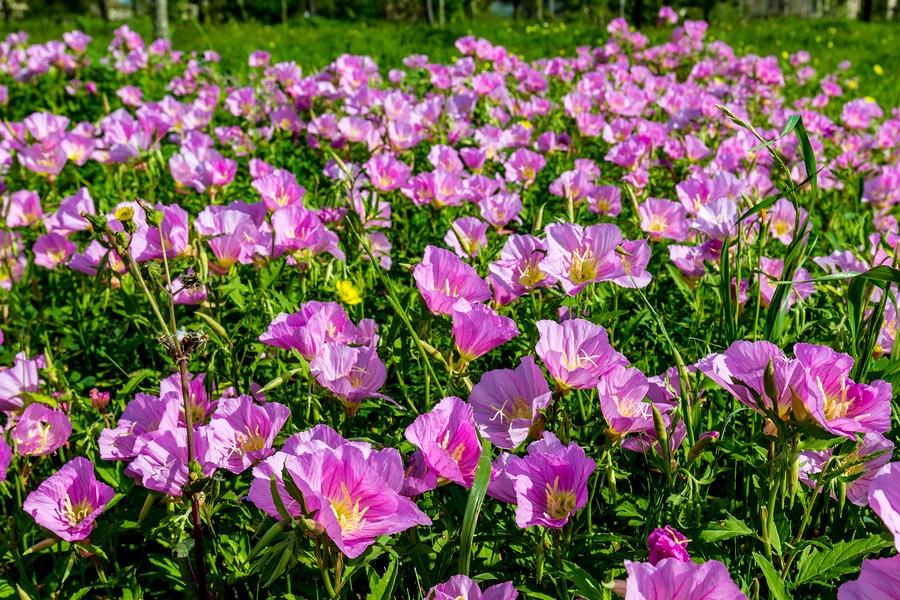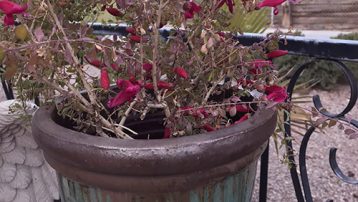Last updated on January 3rd, 2024 at 08:30 am
The Mexican Primrose is also called Texas Primrose, Evening Primrose, and its botanical name Oenothera Berlandieri. It can grow in poor soil but will do better with composted loamy soil. It is considered a low-water plant but can also take lots of water. Tolerates full sun but will bloom longer if placed in morning sun and afternoon shade, or underneath a large tree with filtered light shining through.
Mexican Primrose will grow along the ditch banks throughout the Southwest region. They propagate themselves when the flower dries up and drops its seeds. It can also produce stem runners that will grow wildly if left alone.
This plant is a great groundcover for dry slopes and other low-maintenance areas. Mexican Primrose will bloom from mid-spring until the mid-summer heat comes around. They come back year after year with very little maintenance on your part.
These plants can become invasive in places where there is lots of rainfall.
How large does it get?
It will grow to about 6-7 inches tall and will spread 6-10 ft. wide. You can also place in large or small containers for a great spring showcase of flowers. They will do great in a rock landscape or Xeriscape yard. Place in the front of other larger drought-tolerant plants.
What Colors do they come in?
They come in white, yellow, light lavender, and dark lavender. There are other hybrids primroses check them out at Monrovia search results.
The Oenothera speciosa Species are lighter in color and are the most common. See the photo below.

The Texas Evening Primrose (Oenothera Berlandieri)

The White Evening Primrose

The Yellow Evening Primrose

Problems with Mexican Primerose
As stated earlier it can be invasive and in regions where there is ample rainfall it is considered a weed. Conversely, it does well in and around the American Southwest. They can get powdery mildew and leaf spot, cut back, and spray with a good fungus spray. Be sure to clean your pruners when trimming plants with any type of fungus.





